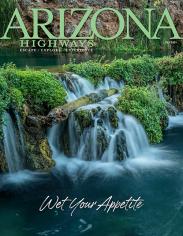I’ve been interested in astronomy all my life. Growing up in the United Kingdom, I had a small telescope, and I remember running to tell my parents that I had seen Sputnik 1 passing over us. But after school, astronomy took a back seat to my engineering career, and it wasn’t until my wife and I retired to Arizona in the mid-2000s that I was able to get back into it.
We built a house in the Phoenix area with a ramp for a roll-out telescope, but what I quickly found was that when you look through a small telescope, all the interesting objects are dim and fuzzy. That got me started in astrophotography, because by making very long exposures, I was able to capture much more than the human eye can easily see. Within a few weeks, I had bought cameras, lenses and other equipment that would work with the new telescope.
Astrophotography digital cameras are specialized instruments that include a cooling system to reduce thermal “noise” from the chip. Another major difference from other cameras is that things such as f-stops and focal lengths don’t mean anything — the aperture is fixed, and usually, the focal length is as well. It’s more about the field of view and the exposure time. The camera itself shoots monochromatic images, and I have several filters that go in front of the lens to capture different kinds of light. I then use software to stack and merge the images to create a full picture of a section of the night sky, such as this image of the Orion Nebula, a popular subject for astrophotographers.
We still live in the Phoenix area, but to take advantage of the dark night skies in Southern Arizona, I now do my astrophotography at a “telescope farm” in Benson. I operate my telescope and camera remotely from home, and I can program them to shoot when and where I want, then go to bed and wake up in the morning to 200 images. I also now have my own astrophotography business, the result of what I call a 10-year “apprenticeship” of learning and trying new things.
It’s so important to get people, particularly children, interested in astronomy so they understand what’s really out there in the universe. Often, people have the same problem I did: They buy small telescopes but feel limited in what they can see with them. My suggestion is to get a smartphone adapter for your telescope so you can put your phone against the eyepiece and use it to make a longer exposure, which will allow you to see much more. And maybe, like me, you’ll develop an interest in photographing the heavens.

